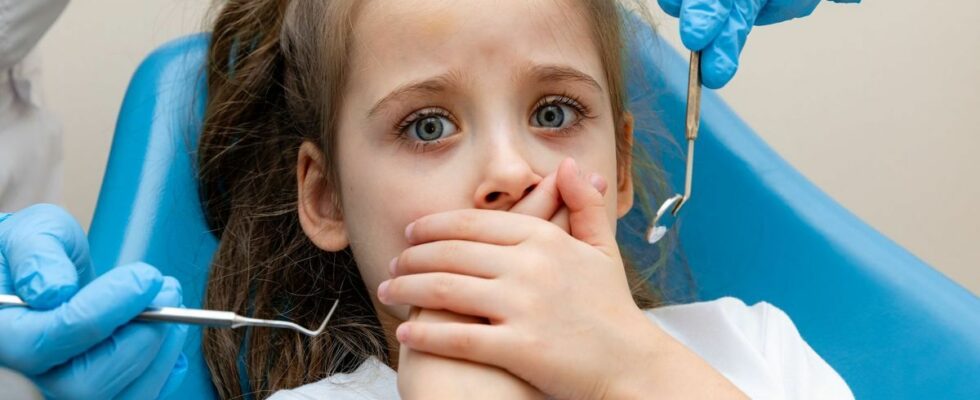Published on
updated on
Reading 2 min.
in collaboration with
Dr Jérémy Amzalag (Dental surgeon specializing in Implantology and Periodontology)
In France, more than one child in 10 suffers from hypomineralization of the molars and incisors, a disease whose exact cause is unknown and which destroys enamel and promotes cavities. Dr Jeremy Amzalag, dentist, takes stock of this little-known disease.
If the quality of your children’s teeth is deteriorating, despite good hygiene, there may be a reason: a dental disease called MIH. This hypomineralization of molars and incisors would impact more and more children.
What is MIH?
According to Dr. Jérémy Amzalag, dentist and member of our Doctissimo expert committee, MIH is a lack of mineralization. “This means that the enamel is less mineralized, so it is somehow ‘softer’ and more fragile than it should be. And it is therefore more vulnerable to bacterial attack. emphasizes Dr. Amzalag. As a result, cavities set in. In extreme cases, this can lead to the destruction of the enamel.
In terms of frequency, MIH affects 10 to 20% of permanent teeth, but remains rare in milk teeth. “If this disease already affects the baby teeth, there is an even greater chance that it will then affect the permanent teeth. We must therefore be particularly attentive to the health of milk teeth” advises our expert.
The MIH is, however, easily identifiable. In addition to the feeling of more sensitive teeth, this hypomineralization gives whitish, yellowish and brownish spots on the teeth. “This condition only concerns the molars and incisors, not the other teeth” according to our expert. There is little chance that your dentist will miss it, therefore.
Where does this disease come from?
However, it is difficult to avoid this disease, the origin of which we do not yet really know, but which is increasingly common. “Today, nothing has really been demonstrated, continues our expert, but we have several hypotheses: a genetic factor, the taking of certain antibiotics during pregnancy, or the presence of environmental factors (such as endocrine disruptors). However, this still remains to be proven.”
To best treat or protect your children’s mouths from this dental condition, priority is given to care! “This requires very regular monitoring of children and particularly rigorous dental hygiene” insists the dentist. We can therefore use toothpastes which protect the enamel a little more, or which will reduce the sensitivity of the teeth.
But the dentist’s main message concerns prevention: “The main thing is to establish and follow rigorous hygiene rules with your children, and to indulge as little as possible in sweets, snacks and sodas. Because these are very important risk factors in the appearance of cavities and damage. It is therefore a question of being even more demanding, if possible, with the affected children.” Enough to maintain a healthy smile for longer!
